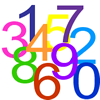Skip over navigation








Or search by topic
Number and algebra
Geometry and measure
Probability and statistics
Working mathematically
Advanced mathematics
For younger learners
Networks and Graph Theory

This feature introduces students to the topic of networks, which has many real life applications.
The problems in this feature will encourage students to experiment, conjecture and deduce general relationships for networks in different contexts.
You can find out more about real life applications of networks in these Plus articles.
You can also watch a recording of the webinar in which we discussed the mathematical thinking which can be prompted by these activities.
Sprouts
Age 11 to 16
Challenge Level 





A game for 2 people. Take turns joining two dots, until your opponent is unable to move.
Who's Who?
Age 11 to 16
Challenge Level 





Can you solve the clues to find out who's who on the friendship graph?
The Bridges of Konigsberg
Age 11 to 18
Challenge Level 





Investigate how networks can be used to solve a problem for the 18th Century inhabitants of Konigsberg.
Network Trees
Age 14 to 18
Challenge Level 





Explore some of the different types of network, and prove a result about network trees.
Euler Meets Schlegel
Age 16 to 18
Challenge Level 





Discover how networks can be used to prove Euler's Polyhedron formula.
If I Share, Will My Friends Share Too?
Age 11 to 18
Read about how mathematicians used network theory to predict the spread of disease among teenagers.
You may also like
Introducing Complex Numbers
These resources are designed to introduce students to complex numbers in an exploratory way.
Statistical Investigations
A chance for students to use statistical skills to answer some interesting questions.

